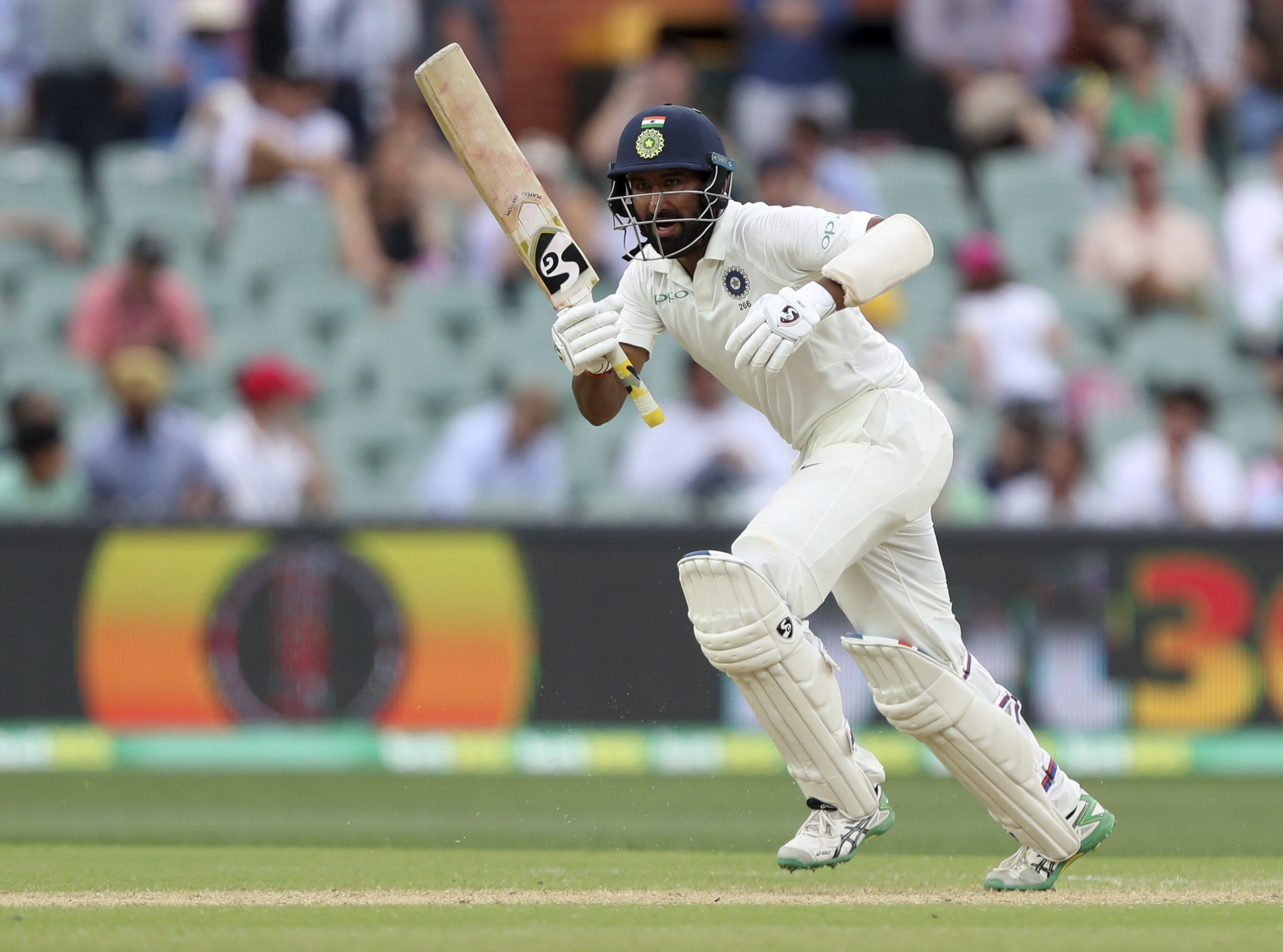Not long ago, there were question marks over Cheteshwar Pujara’s strike rate in Test cricket –- the only format he has been playing for some time now. With a demanding skipper, whose stunning batting exploits are matched only by his occasionally unreasonable expectations, Pujara’s career seemed to be at the crossroads.
The right-hander, however, couldn’t have afforded to allow the situation to get the better of him. Restricted to just one format -- and Test cricket would be grateful for that -- Pujara had to fight his way up again. Not as being someone else that others wanted him to be but by just being himself.
Pujara can’t be flamboyant like Rohit Sharma or domineering like Virat Kohli. His strength lay in not blasting the bowlers out of the attack but wearing them down with his unwavering concentration. Patience is his virtue and persistence his forte. All these traits were in full display in Adelaide even as the more pampered Indian batsmen batted in a manner as though Test matches are one-day affairs.
"It's Test cricket, Allan Border used to say there's more time in Test cricket than you'll ever imagine, so in batting, you can bat so much time,” said Australian coach Justin Langer on Tuesday. “That's one of the messages to our young batsmen and all our guys is there's so much time in Test cricket. One of the things we talk about is partnerships and patience, building pressure on the opposition, so it's one of the important virtues of being a successful Test cricketer,” he offered.
With little to separate the teams in bowling, Langer knows it was Pujara who made the difference. Where Pujara was all grit and composure, his mates were reckless and impulsive. Even as wickets tumbled at the other end and India slipped to 41/4 after electing to bat first, the Saurashtra batsman remained remarkably unaffected, cocooned in his own tranquil world. There could be a direct connection to Pujara’s success and other top-order batsmen’s failure in the first innings.
Pujara has played just five ODIs, the last one being in June 2014, and he will probably never play a T20I. In his 13-year competitive cricket, Pujara has appeared in only 58 T20s whereas someone like Rishab Pant, who began his first-class career only in October 2015, has already played 61 T20s.
Pujara’s exclusion from the shorter versions has kept his batting seemingly unaffected by those bad habits that a batsman develops like driving at the balls outside the off. He can get away with it in white ball cricket where pitches are flat and slip fielders are not always present, but Tests are a different ball game.
The pitches in Australia, even if slightly spin-friendly, are quite different to rank turners in the sub-continent. They have enough grass for the pacers to stay interested and the bounce and the rough to keep the spinners in play. This provides twin challenges to the batsmen – the pacers’ bounce and movement and the spinners’ turn and kick off the surface.
In the first innings, India’s top-order capitulated against pace, driving so thoughtlessly that it would have made the temperamental Formula One driver Max Verstappen proud. Even an acknowledged “leaver of the ball” like M Vijay couldn’t resist the temptation as we had seen in England as well. Pujara, on the other hand, was like a meditating monk. Nothing could faze him, and no one could dictate the game to him. He set his own template for his innings and the match.
If it was a test of their temperament against pace, the challenge in the second innings was about their technique. Barring Pujara in both the innings and to an extent Ajinkya Rahane in the second, no Indian batsman looked comfortable against Nathan Lyon. With enough roughs on the right-hand batsmen’s off-stump, Lyon proved a hard nut to crack but not so much for Pujara. While even a batsman like Kohli was hesitant to step forward and smother the spin of the off-spinner, Pujara did this job adroitly to reap rich rewards.
